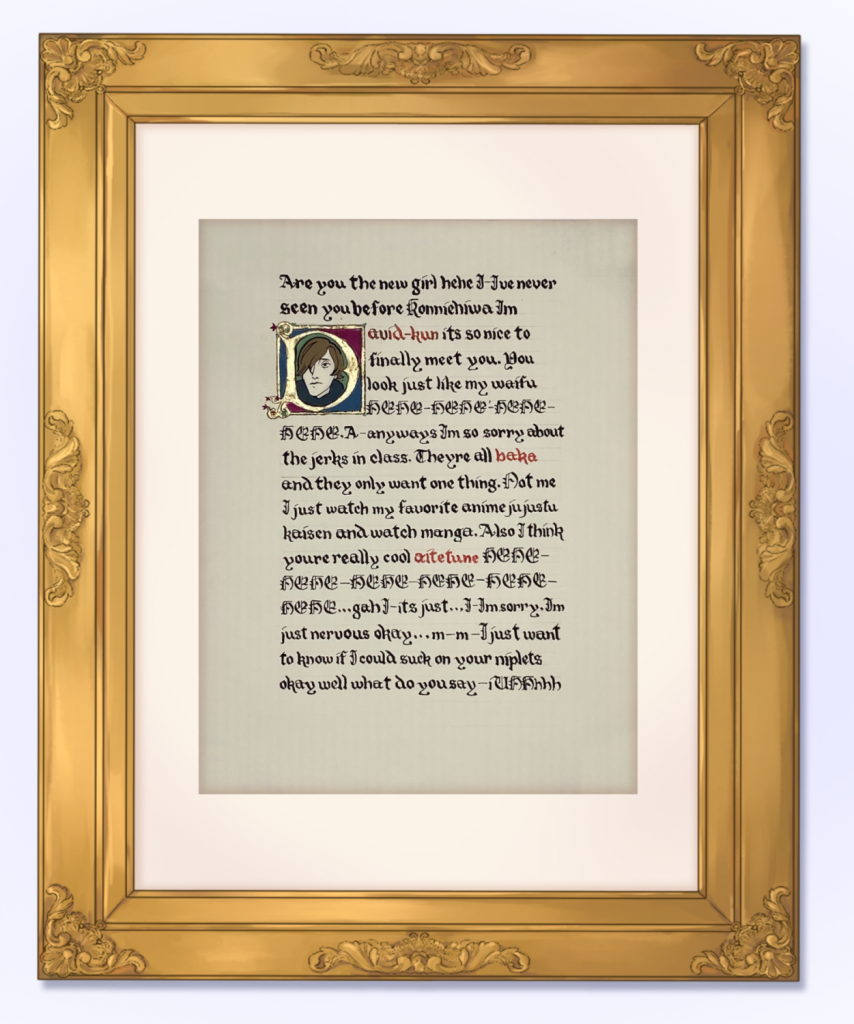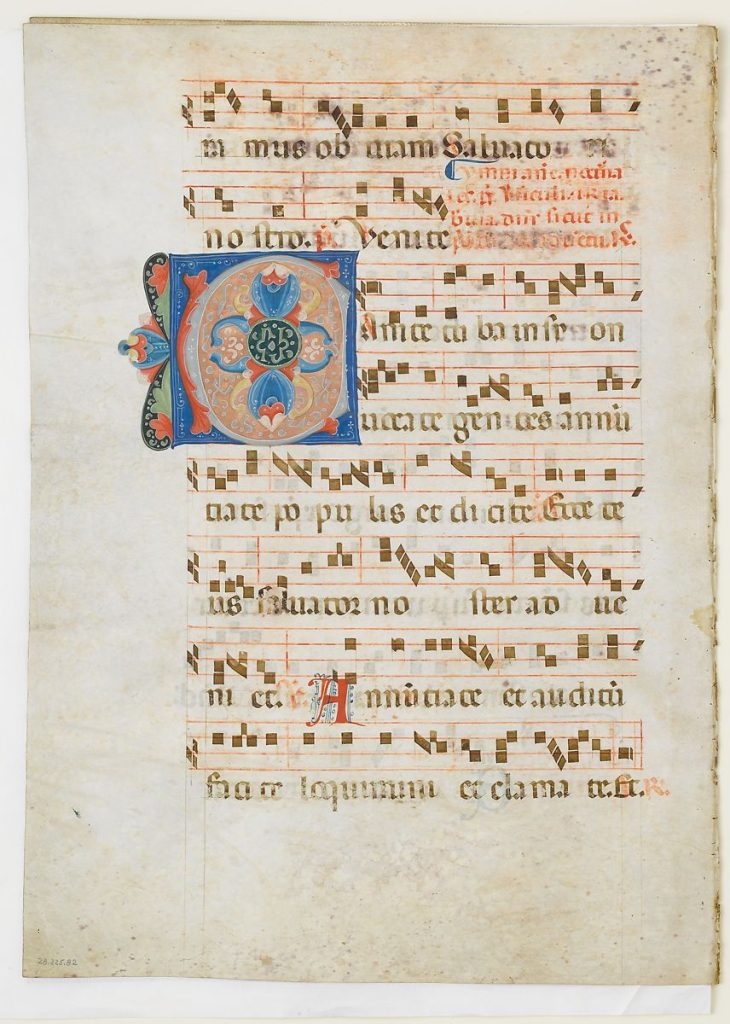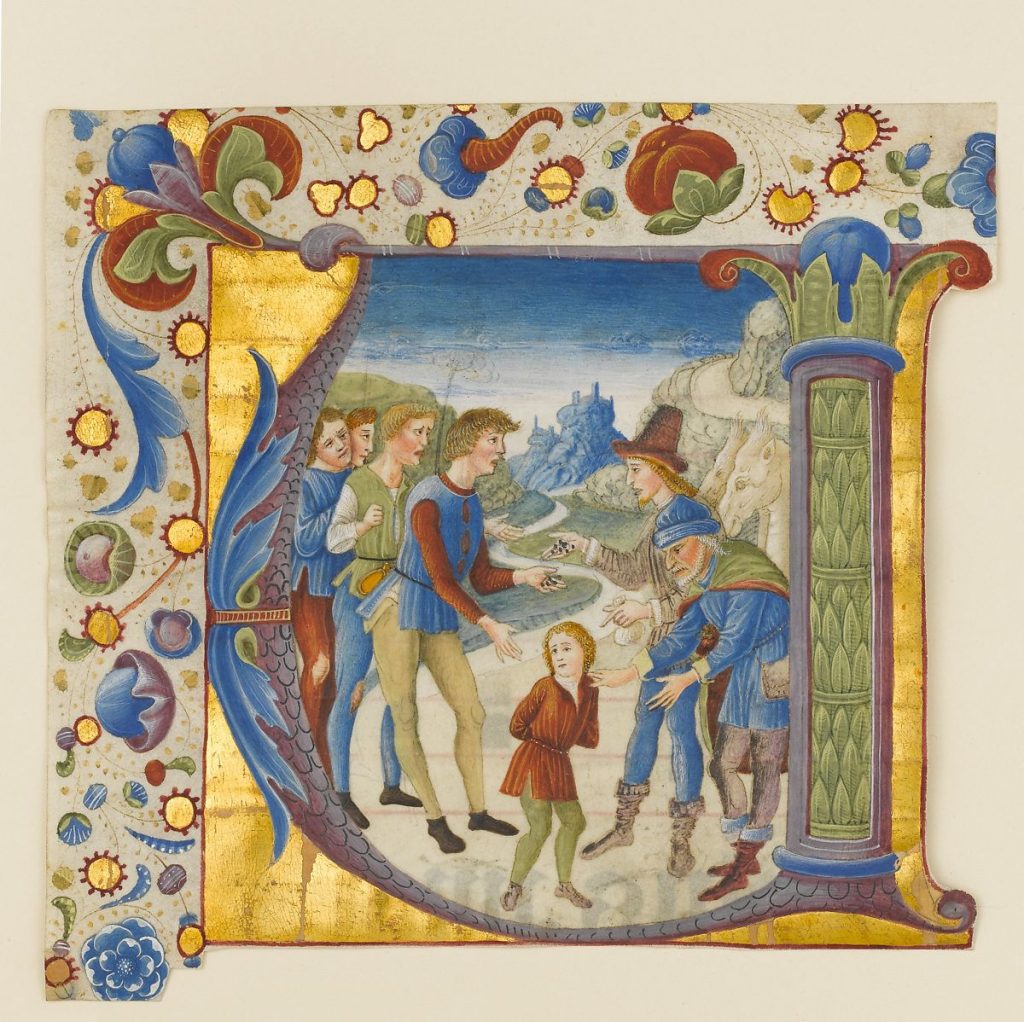Materials
The main materials for illuminated manuscripts include: parchment, ink, quills, and gold. Preparation for illuminated manuscripts starts with the parchment or vellum. Traditionally, parchment and vellum are made from thin, stretched-out animal hides. Continuing the preparation, ingredients are then gathered and made into inks, while feathers are cut into quills.
Instead of the traditional materials, I opted for calligraphy paper, inks, and dip pens.

Process
Before putting pen to paper, the scribe starts by mapping out guidelines. Then the guide starts inscribing the plain letters, allowing it to dry before continuing to the complex illumination. The illumination is often designed on a small slab of wax and is transferred with thin perforated parchment and loose charcoal dust.
In my more modern methods, I transferred my illuminated design with tracing paper and graphite.

After transferring the illuminated initials onto the page, the scribe will carefully go in with a gum and apply the gold leaf. Finally, the scribe finishes the laborious process by coloring in and inking the illuminated letters.

After creating my own illuminated page, the process is much simpler said than done. It had taken me about four tries before I was happy with my calligraphy. The final script took about four to five hours to complete. Though, I was unable to get my illuminated initial to be as intricate as I’d like, because of my inexperience with the materials used. Luckily, I didn’t have to go through the added processes of making my parchment or ink mediums. As for the museum set up, I decided to keep it rather plain and simple, as most museums would want their artifacts to be the star of the show.
References
I had tried to choose references of manuscripts before the introduction of the printing presses. Knowing how long the calligraphy was going to take, I also chose simpler pages with large illuminated initials.



Sources:
https://www.britannica.com/art/illuminated-manuscript
https://www.metmuseum.org/toah/hd/manu/hd_manu.htm
https://artsandculture.google.com/story/CQVBWOBXaPIaJw
https://www.getty.edu/art/collection/object/103RVA
